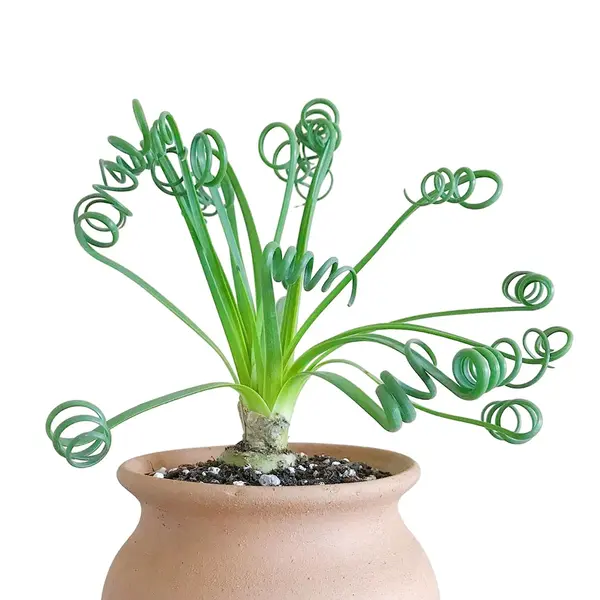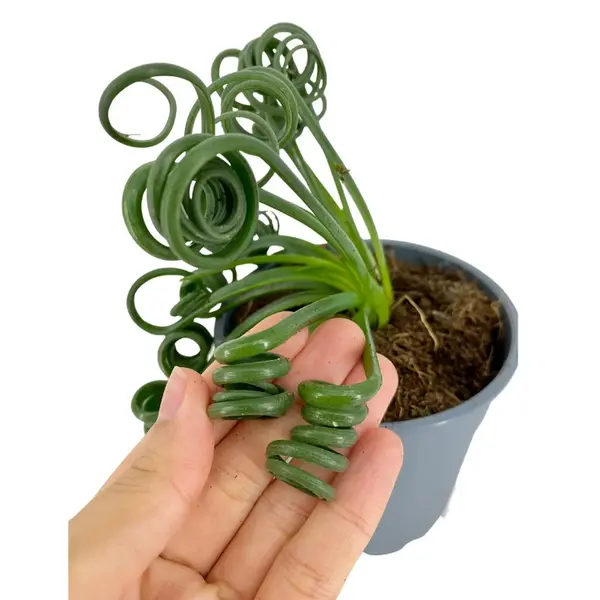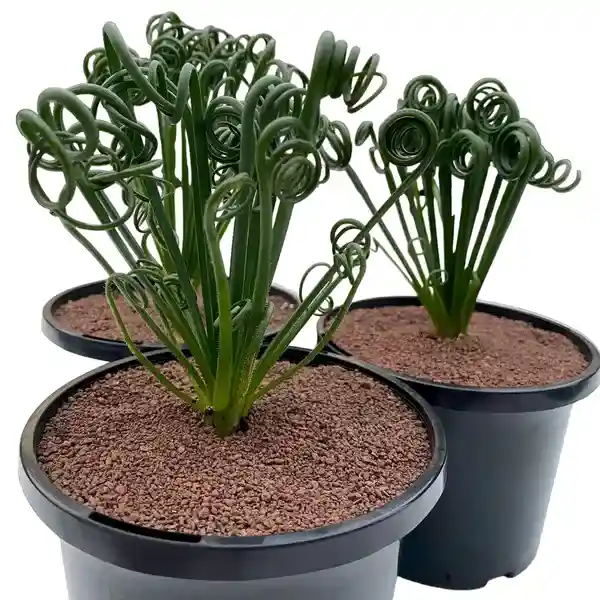Frizzle Sizzle Plant, Albuca spiralis – Bulb
Original price was: ₹2,299.00.₹999.00Current price is: ₹999.00.
48 in stock
Single bulb | Growbag Included | Free Shipping
The Frizzle Sizzle plant, Albuca spiralis, is a fascinating succulent known for its unique, corkscrew-shaped leaves. Its care is a bit different from many other houseplants because of its specific growth cycle.

Growth Cycle and Dormancy
- Winter Grower: Unlike most houseplants, the Frizzle Sizzle’s active growing season is in the fall and winter. This is when it will put out new leaves and eventually, a flower stalk.
- Summer Dormancy: In late spring or early summer, the plant goes dormant. Its leaves will turn yellow and brown and eventually die back completely. This is a normal part of its life cycle and not a sign that it is dying. During this period, the plant is conserving energy in its bulb.
Frizzle Sizzle Plant, Albuca spiralis Key Care Requirements:

1. Light
- High Light is Crucial: The most important factor for getting those characteristic tight curls is bright light. The plant needs full sun or bright, indirect light for at least 5-7 hours a day.
- Signs of Insufficient Light: If the leaves are growing straight and not curling, it’s a sure sign your plant needs more light.
- Ideal Placement: A south or west-facing window is ideal. You can also use a grow light to supplement natural light, especially during the shorter days of winter.
2. Watering
- “Soak and Dry” Method: During the active growing season (fall and winter), water the plant thoroughly, but only when the top half of the soil is completely dry. Let the water drain out of the pot’s bottom.
- Danger of Overwatering: This plant is very susceptible to bulb rot, so it’s critical to avoid overwatering. Yellowing or mushy leaves are common signs.
- Dormancy Watering: When the plant enters its summer dormancy, drastically reduce your watering. Water only occasionally, just enough to keep the bulb from completely drying out. Some sources recommend only watering every 3-4 weeks.
3. Soil and Potting
- Excellent Drainage: A well-draining soil mix is essential to prevent root and bulb rot. Use a cactus or succulent mix, and consider adding extra perlite or coarse sand for even better drainage.
- Potting: Use a pot with drainage holes. Terracotta pots are a great choice because they are porous and allow excess moisture to evaporate.
- Bulb Placement: When repotting, only the base of the bulb should be covered by soil, with the top part exposed.
4. Temperature and Humidity
- Temperature: Frizzle Sizzle plants thrive in temperatures between 65-75°F (18-24°C) during their active growth. They can tolerate temperatures as low as 60°F (15°C) but should be protected from frost. The cooler temperatures in fall can help trigger new growth.
- Humidity: Average room humidity is sufficient. Avoid overly humid or enclosed spaces, as this can lead to powdery mildew.
5. Fertilizing
- Growing Season Only: Fertilize with a balanced liquid fertilizer during the active growing season (fall and winter). You can apply it every two to four weeks at half the recommended strength.
- No Fertilizer During Dormancy: Do not fertilize the plant during its summer dormancy.
6. Flowering
- When it Blooms: Frizzle Sizzle typically flowers in late winter or early spring. It sends up a tall stalk with fragrant, yellow-green flowers that are said to smell like vanilla.
- After Flowering: Once the flower stalk fades, you can cut it off to redirect the plant’s energy to the bulb. The plant will then start to enter its dormancy phase.

Frizzle Sizzle Plant, Albuca spiralis Common Problems and Solutions:
- Straight Leaves: This is a sign of insufficient light. Move the plant to a sunnier location.
- Yellowing or Droopy Leaves: Usually a sign of overwatering or the plant entering dormancy. Check the soil moisture and adjust your watering schedule.
- Bulb Rot: This is the most common and serious issue, caused by overwatering and poor drainage. If you notice this, you’ll need to unpot the plant, trim away any rotted roots, and repot in fresh, dry, well-draining soil. Then, reduce watering.
- Browning Leaf Tips: This can happen naturally after the plant flowers or due to low humidity or over-fertilization.
Only logged in customers who have purchased this product may leave a review.













 If you need any assistance, I'm always here. Have you found what you were looking for?
If you need any assistance, I'm always here. Have you found what you were looking for?
Reviews
There are no reviews yet.